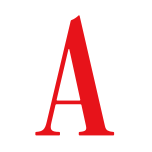Gulf Princes, Safaris, and Conservation Groups are Destroying the Maasai
Stephanie McCrummen at The Atlantic


The forces arrayed against Songoyo [a Massai man displaced by globalist and corporate conservation efforts], whom I met in the course of two long trips to Tanzania late last year, include some of the world’s most powerful people and interests. (I have not used Songoyo’s last name out of concern for his safety.) What these people and interests want is what the Maasai are trying to keep: the land they live on.
Global leaders are seeking what they consider to be undeveloped land to meet a stated goal of conserving 30 percent of the planet’s surface by 2030. Corporations want undisturbed forests in order to offset pollution. Western conservation groups, which refer to the Maasai as “stakeholders” on their own land, exert great influence, as does a booming safari industry that sells an old and destructive myth—casting the Serengeti as some primordial wilderness, with the Maasai as cultural relics obstructing a perfect view.
The reality is that the Maasai have been stewards, integral to creating that very ecosystem. The same can be said of Indigenous groups around the world, to whom conservation often feels like a land grab. In the past two decades, more than a quarter million Indigenous people have been evicted to make way for ecotourism, carbon-offset schemes, and other activities that fall under the banner of conservation. That figure is expected to soar.
For all its accomplishments, the cause of saving the planet has become a trillion-dollar business, a global scramble in which wealthy nations are looking to the developing world not just for natural resources, but for nature itself. The wealthy players include not only Europeans and Americans but Arabs and Chinese and others. On the African continent, political leaders are enthusiastic about what so-called green foreign investment might mean for their own economies (and, maybe, their bank accounts).
Such are the pressures being brought to bear on northern Tanzania, where the Maasai migrated with their cattle 400 years ago, settling in an area encompassing hundreds of thousands of square miles of grassy plains, acacia woodlands, rivers, lakes, snowcapped mountains, salt flats, forests, and some of the most spectacular wildlife on the planet. They called it Siringet, which in the Maa language means “the place where the land runs on forever.” The Maasai see their recent history as a struggle to save that land from those who claimed it needed saving.
Read the rest (subscription might be required)


